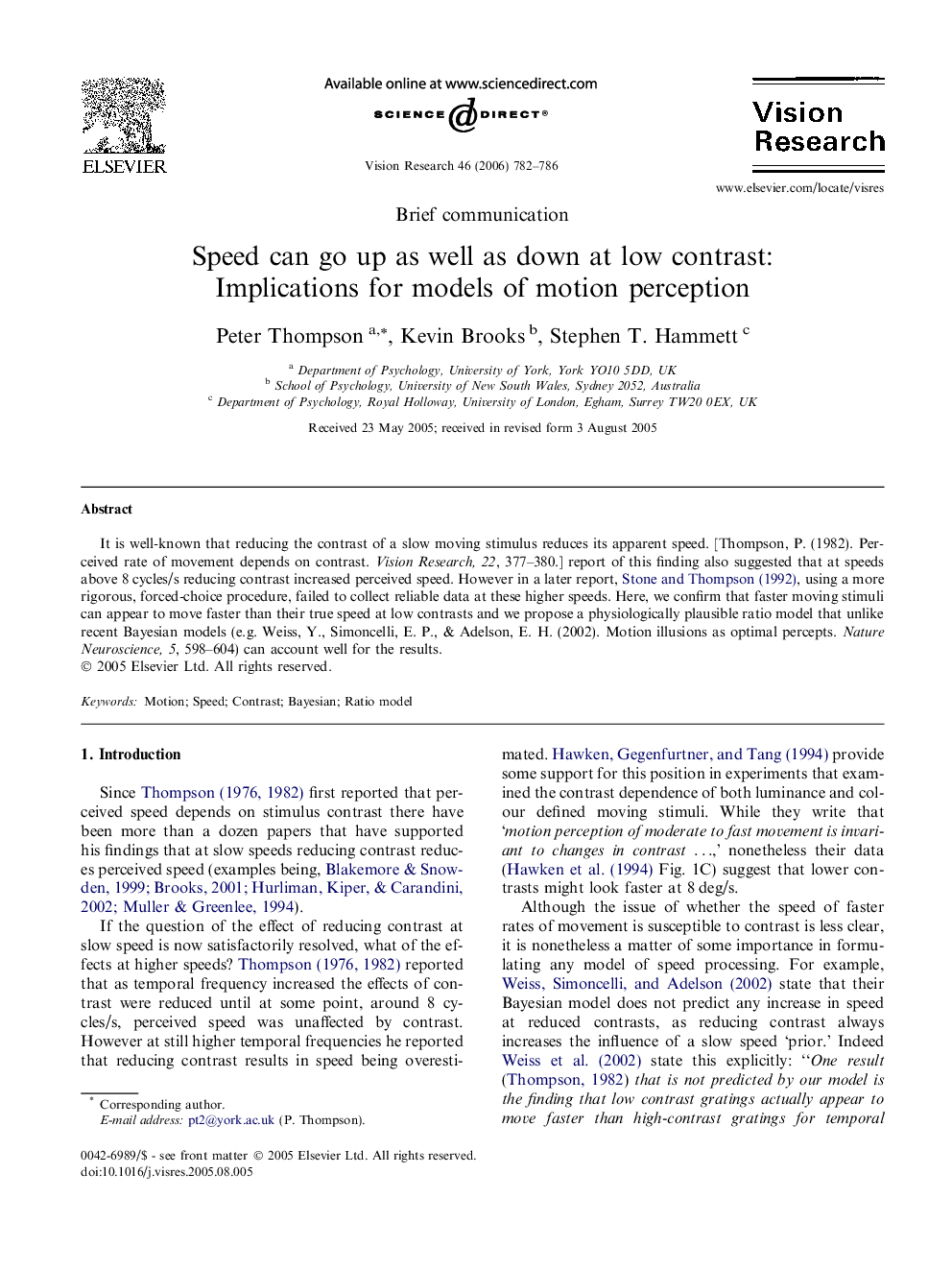| Article ID | Journal | Published Year | Pages | File Type |
|---|---|---|---|---|
| 4036337 | Vision Research | 2006 | 5 Pages |
It is well-known that reducing the contrast of a slow moving stimulus reduces its apparent speed. [Thompson, P. (1982). Perceived rate of movement depends on contrast. Vision Research, 22, 377–380.] report of this finding also suggested that at speeds above 8 cycles/s reducing contrast increased perceived speed. However in a later report, Stone and Thompson (1992), using a more rigorous, forced-choice procedure, failed to collect reliable data at these higher speeds. Here, we confirm that faster moving stimuli can appear to move faster than their true speed at low contrasts and we propose a physiologically plausible ratio model that unlike recent Bayesian models (e.g. Weiss, Y., Simoncelli, E. P., & Adelson, E. H. (2002). Motion illusions as optimal percepts. Nature Neuroscience, 5, 598–604) can account well for the results.
